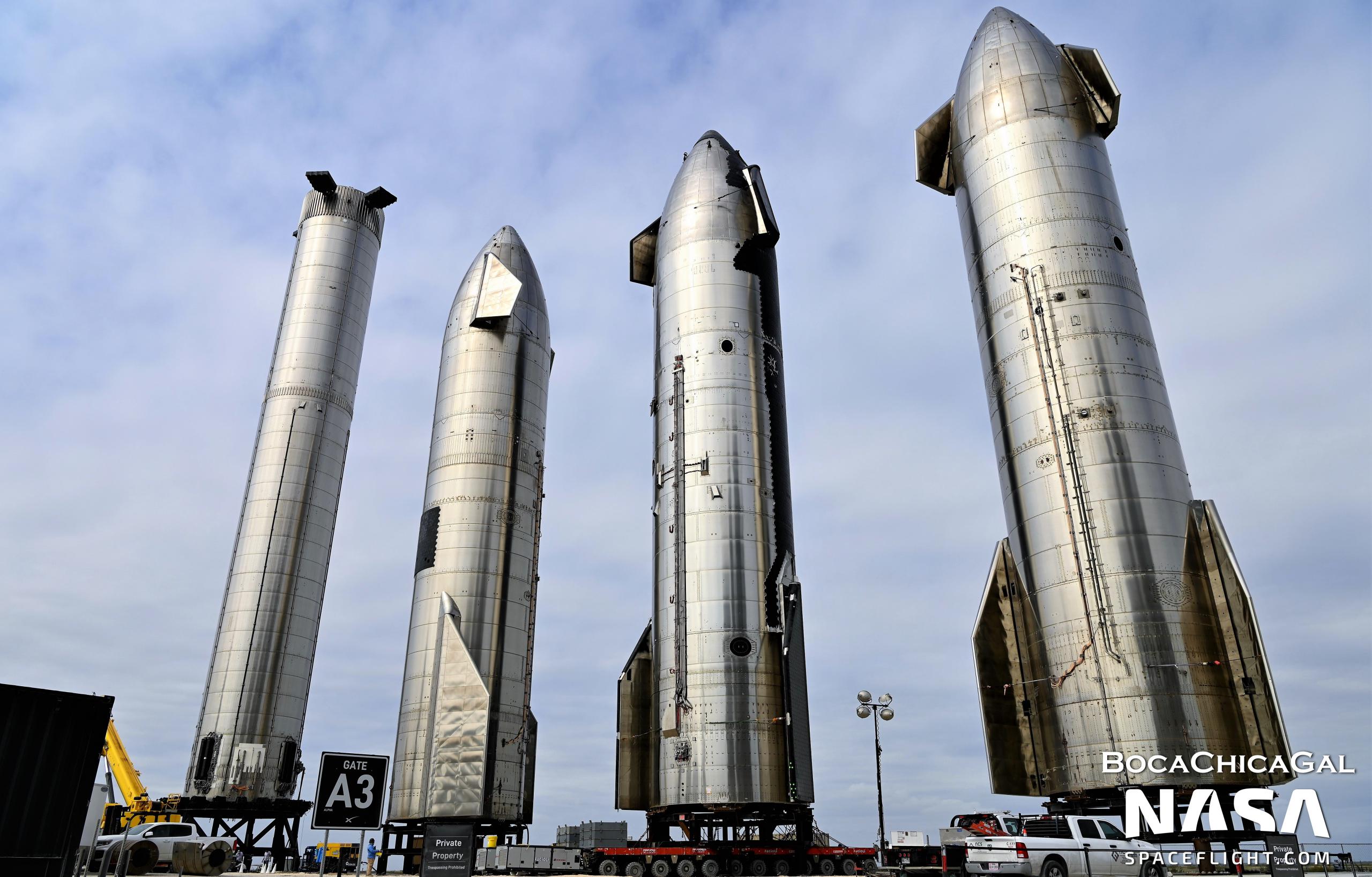
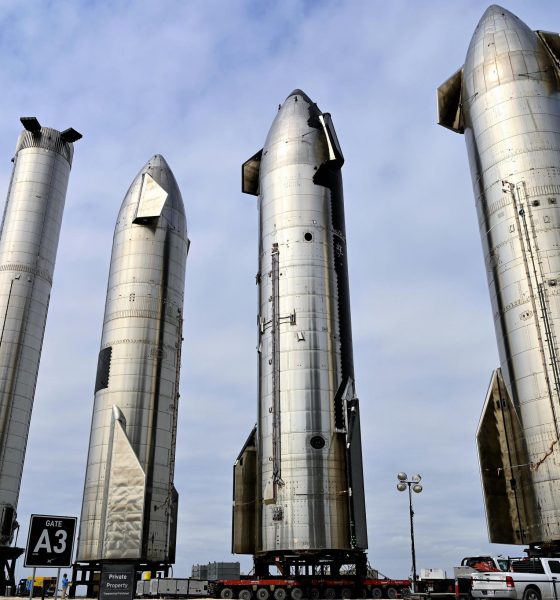
News
SpaceX to send retired Starship to local Texas airport, says Elon Musk
In a brief Twitter exchange, the Brownsville/South Padre Island International Airport (BRO) appears to have talked SpaceX CEO Elon Musk into turning a retired Starship prototype into a public exhibit.
Operational in some form since 2020, SpaceX’s ‘Starbase’ Starship factory is already a bit of a tourist destination for Brownsville, Texas and the local Rio Grande Valley – particularly for fans of spaceflight and rockets. The substantial factory and a trio of orbital and suborbital launch pads are both located directly beside a public highway, a tiny private housing development, and a public beach – maintaining access to all of which has been a consistent challenge for SpaceX for years.
However, the company has continued to work to coexist with locals while simultaneously generating tourism and bringing unprecedented economic growth and publicity to the relatively quiet region. It’s increasingly unclear if SpaceX will be able to realize its full ambitions for Starbase and South Texas but Elon Musk recently reiterated the company’s commitment to maintaining a strong presence in the region whether or not the US government gives it the permissions it needs for regular Starship launches.
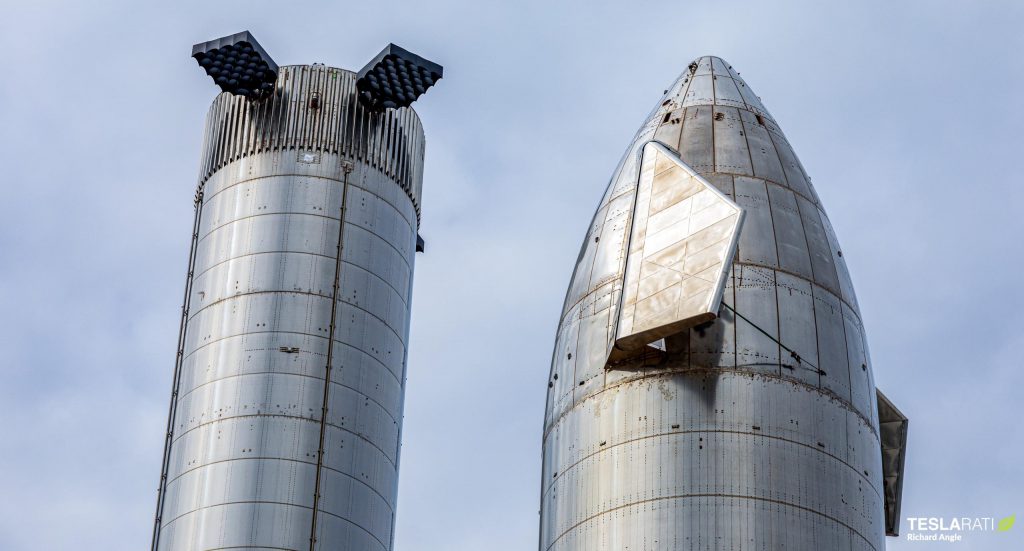
Musk’s drop-of-a-pin willingness to donate an entire Starship prototype to a local organization certainly exemplifies that commitment. While Starbase is already a de facto tourist destination where people can get within a stone’s throw of several prototypes of the largest rockets ever built, the setup for visitors is very impromptu, inconvenient, and right beside an active highway and rocket factory. A dedicated Starship display at a less frenetic site with dedicated parking and no need to tiptoe around a highway would undoubtedly be an improvement.
Situating that public Starship display directly beside the largest local airport would also preclude the need for prospective visitors to drive half an hour out of their way, ensuring that far more people actually get to experience a Starship up close and learn about SpaceX’s presence in the region. Thankfully, increasingly unusual behavior means that SpaceX has no shortage of prototypes to choose from.
Starship SN15 is the first prototype of any kind to fly to a moderate altitude (~10 km), fall back to Earth like a skydiver, flip around at the last second, and survive a soft landing in May 2021. Musk once said that the historic prototype would be reused on a second flight test but the ship never did and has instead sat at Starbase’s ‘Rocket Garden’ ever since. Starship SN16 – almost identical to SN15 – was also supposed to fly but never got to perform a single test before it was retired to the same garden.
Up next, SpaceX mostly finished an entire Super Heavy booster – standing almost 70 meters (230 ft) tall – late last year but sent it (B5) directly to the ‘garden’ without even attempting to finish or test the rocket. Its sister booster, Super Heavy B4, was at one point supposed to support Starship’s first orbital launch attempt but has only completed a fraction of the necessary proof tests after spending almost half a year floating around the orbital launch site. It’s entirely possible that B4 will meet its end beside B5 later this year.
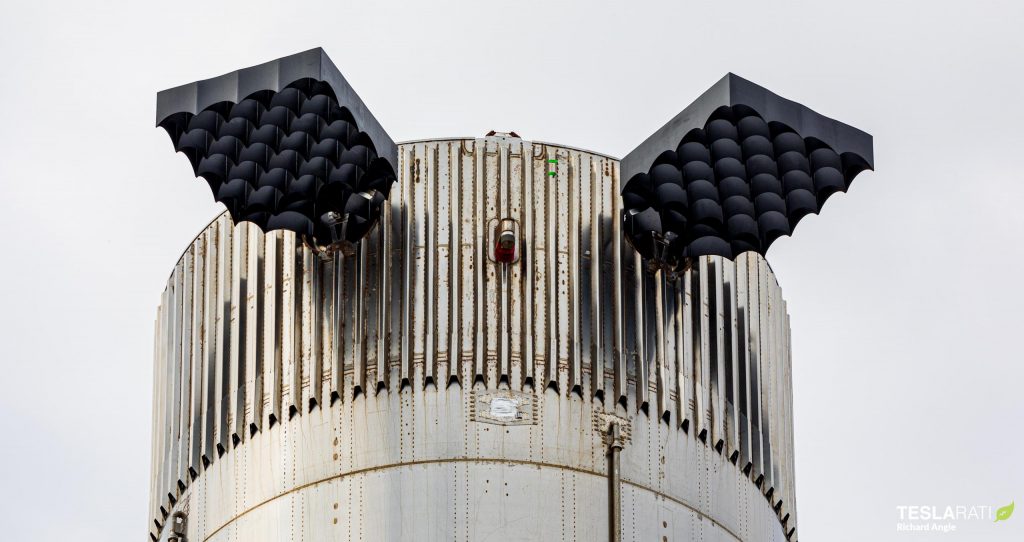
Finally, SpaceX most recently decided to assemble Starship S22 – very similar to Starship S20, the other half of the first orbital test flight pair of B4/S20 – and stacked the ship to its full height on February 14th, 2022. After installing its nosecone and the last two of four flaps, though, SpaceX immediately sent the unfinished Starship to the same graveyard of retired prototypes, strongly implying that it, too, will never be used.
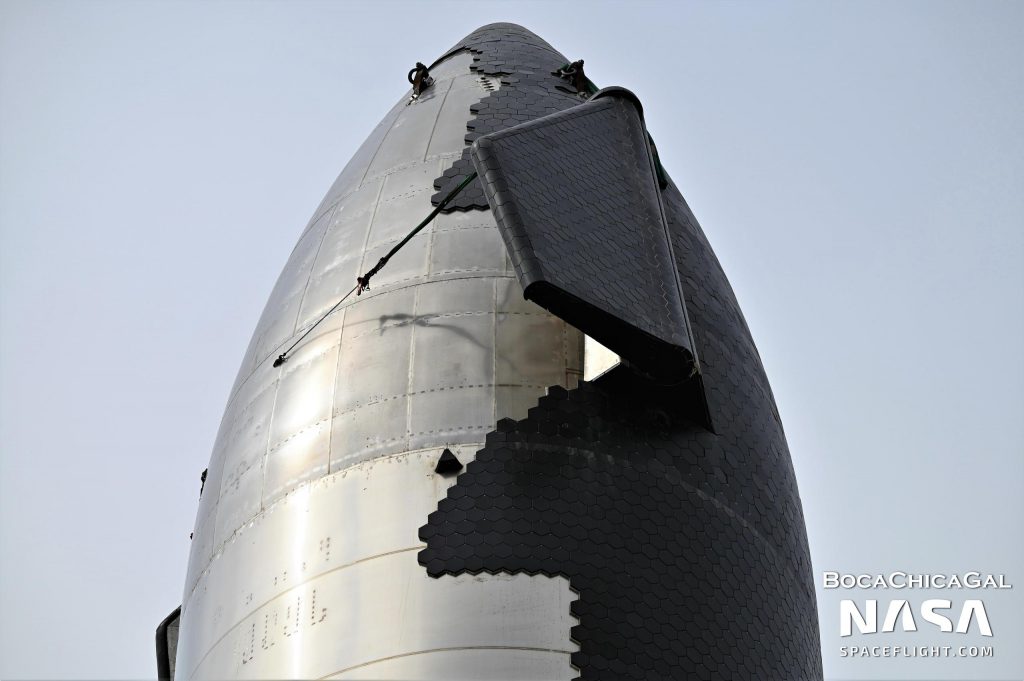
While increasingly confusing from a programmatic standpoint, SpaceX’s ever-growing supply of retired or fully unused Starship and Super Heavy hardware gives the company plenty of options for donating one or even several prototypes. The only real barriers are the need for a concrete foundation to secure the display vehicles and the challenge of transporting vertical, building-sized rockets by road. To get a Starship all the way to the Brownsville International Airport, a number of power lines and traffic lights would likely need to be temporarily removed or rerouted, but that’s a relatively minor inconvenience with enough political will.

News
Tesla (TSLA) receives “Buy” rating and $551 PT from Canaccord Genuity
He also maintained a “Buy” rating for TSLA stock over the company’s improving long-term outlook, which is driven by autonomy and robotics.

Canaccord Genuity analyst George Gianarikas raised his Tesla (NASDAQ:TSLA) price target from $482 to $551. He also maintained a “Buy” rating for TSLA stock over the company’s improving long-term outlook, which is driven by autonomy and robotics.
The analyst’s updated note
Gianarikas lowered his 4Q25 delivery estimates but pointed to several positive factors in the Tesla story. He noted that EV adoption in emerging markets is gaining pace, and progress in FSD and the Robotaxi rollout in 2026 represent major upside drivers. Further progress in the Optimus program next year could also add more momentum for the electric vehicle maker.
“Overall, yes, 4Q25 delivery expectations are being revised lower. However, the reset in the US EV market is laying the groundwork for a more durable and attractive long-term demand environment.
“At the same time, EV penetration in emerging markets is accelerating, reinforcing Tesla’s potential multi‑year growth runway beyond the US. Global progress in FSD and the anticipated rollout of a larger robotaxi fleet in 2026 are increasingly important components of the Tesla equity story and could provide sentiment tailwinds,” the analyst wrote.
Tesla’s busy 2026
The upcoming year would be a busy one for Tesla, considering the company’s plans and targets. The autonomous two-seat Cybercab has been confirmed to start production sometime in Q2 2026, as per Elon Musk during the 2025 Annual Shareholder Meeting.
Apart from this, Tesla is also expected to unveil the next-generation Roadster on April 1, 2026. Tesla is also expected to start high-volume production of the Tesla Semi in Nevada next year.
Apart from vehicle launches, Tesla has expressed its intentions to significantly ramp the rollout of FSD to several regions worldwide, such as Europe. Plans are also underway to launch more Robotaxi networks in several more key areas across the United States.
News
Waymo sues Santa Monica over order to halt overnight charging sessions
In its complaint, Waymo argued that its self-driving cars’ operations do not constitute a public nuisance, and compliance with the city’s order would cause the company irreparable harm.

Waymo has filed a lawsuit against the City of Santa Monica in Los Angeles County Superior Court, seeking to block an order that requires the company to cease overnight charging at two facilities.
In its complaint, Waymo argued that its self-driving cars’ operations do not constitute a public nuisance, and compliance with the city’s order would cause the company irreparable harm.
Nuisance claims
As noted in a report from the Los Angeles Times, Waymo’s two charging sites at Euclid Street and Broadway have operated for about a year, supporting the company’s growing fleet with round-the-clock activity. Unfortunately, this has also resulted in residents in the area reportedly being unable to sleep due to incessant beeping from self-driving taxis that are moving in and out of the charging stations around the clock.
Frustrated residents have protested against the Waymos by blocking the vehicles’ paths, placing cones, and “stacking” cars to create backups. This has also resulted in multiple calls to the police.
Last month, the city issued an order to Waymo and its charging partner, Voltera, to cease overnight operations at the charging locations, stating that the self-driving vehicles’ activities at night were a public nuisance. A December 15 meeting yielded no agreement on mitigations like software rerouting. Waymo proposed changes, but the city reportedly insisted that nothing would satisfy the irate residents.
“We are disappointed that the City has chosen an adversarial path over a collaborative one. The City’s position has been to insist that no actions taken or proposed by Waymo would satisfy the complaining neighbors and therefore must be deemed insufficient,” a Waymo spokesperson stated.
Waymo pushes back
In its legal complaint, Waymo stated that its “activities at the Broadway Facilities do not constitute a public nuisance.” The company also noted that it “faces imminent and irreparable harm to its operations, employees, and customers” from the city’s order. The suit also stated that the city was fully aware that the Voltera charging sites would be operating around the clock to support Waymo’s self-driving taxis.
The company highlighted over one million trips in Santa Monica since launch, with more than 50,000 rides starting or ending there in November alone. Waymo also criticized the city for adopting a contentious strategy against businesses.
“The City of Santa Monica’s recent actions are inconsistent with its stated goal of attracting investment. At a time when the City faces a serious fiscal crisis, officials are choosing to obstruct properly permitted investment rather than fostering a ‘ready for business’ environment,” Waymo stated.
News
Tesla FSD v14.2.2 is getting rave reviews from drivers
So far, early testers have reported buttery-smooth drives with confident performance, even at night or on twisty roads.

Tesla Full Self-Driving (Supervised) v14.2.2 is receiving positive reviews from owners, with several drivers praising the build’s lack of hesitation during lane changes and its smoother decision-making, among others.
The update, which started rolling out on Monday, also adds features like dynamic arrival pin adjustment. So far, early testers have reported buttery-smooth drives with confident performance, even at night or on twisty roads.
Owners highlight major improvements
Longtime Tesla owner and FSD user @BLKMDL3 shared a detailed 10-hour impression of FSD v14.2.2, noting that the system exhibited “zero lane change hesitation” and “extremely refined” lane choices. He praised Mad Max mode’s performance, stellar parking in locations including ticket dispensers, and impressive canyon runs even in dark conditions.
Fellow FSD user Dan Burkland reported an hour of FSD v14.2.2’s nighttime driving with “zero hesitations” and “buttery smooth” confidence reminiscent of Robotaxi rides in areas such as Austin, Texas. Veteran FSD user Whole Mars Catalog also demonstrated voice navigation via Grok, while Tesla owner Devin Olsen completed a nearly two-hour drive with FSD v14.2.2 in heavy traffic and rain with strong performance.
Closer to unsupervised
FSD has been receiving rave reviews, even from Tesla’s competitors. Xpeng CEO He Xiaopeng, for one, offered fresh praise for FSD v14.2 after visiting Silicon Valley. Following extended test drives of Tesla vehicles running the latest FSD software, He stated that the system has made major strides, reinforcing his view that Tesla’s approach to autonomy is indeed the proper path towards autonomy.
According to He, Tesla’s FSD has evolved from a smooth Level 2 advanced driver assistance system into what he described as a “near-Level 4” experience in terms of capabilities. While acknowledging that areas of improvement are still present, the Xpeng CEO stated that FSD’s current iteration significantly surpasses last year’s capabilities. He also reiterated his belief that Tesla’s strategy of using the same autonomous software and hardware architecture across private vehicles and robotaxis is the right long-term approach, as it would allow users to bypass intermediate autonomy stages and move closer to Level 4 functionality.








